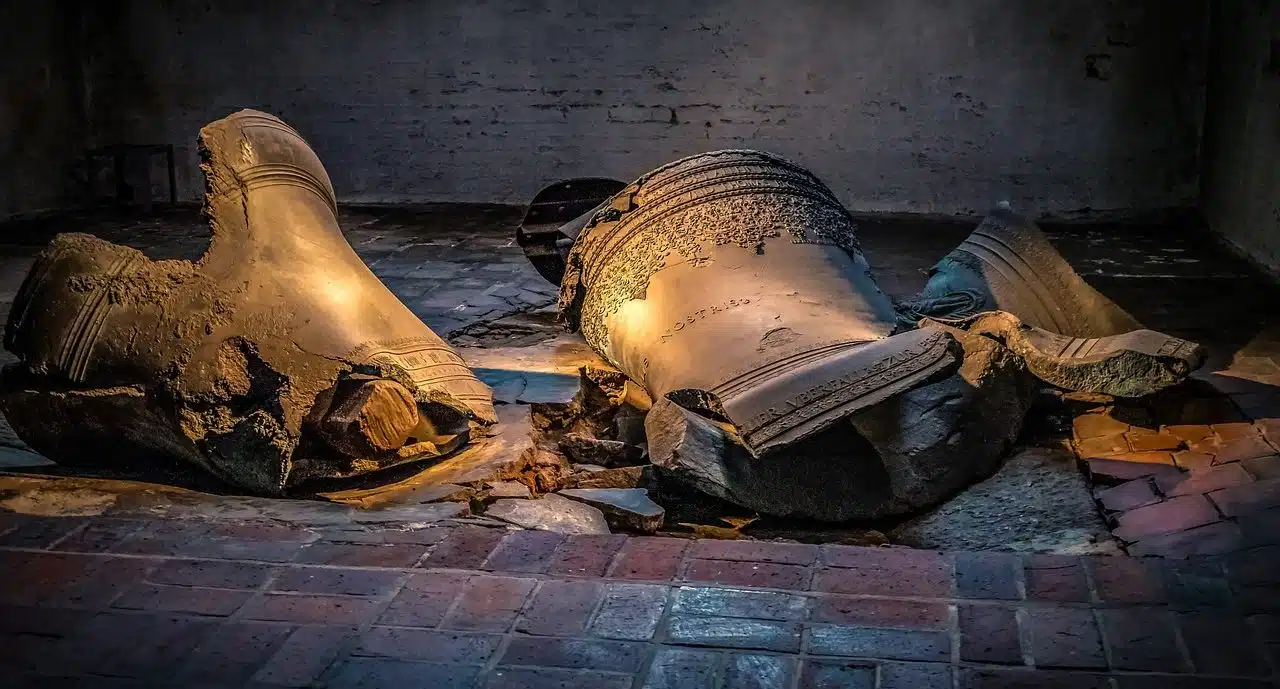
Attacking a sacred place implies sacrilege.
Sacrilege is a term in our language that has its etymological origin in the Latin word sacrilegĭum . It is about irreverence towards something that is considered sacred, venerated or immaculate .
For example: “The priest was outraged by the sacrilege committed by the woman at mass,” “It was a sacrilege: he entered the church naked and began to dance in front of the faithful,” “When the singer stepped on the flag, the “The local public was furious at the sacrilege.”
Types of sacrilege
Sacrilege can be directed at an individual, a place or an object. Suppose a man insults a bishop : this lack of respect towards the religious can be considered a personal sacrilege .
On the other hand, the teenager who writes graffiti on the altar of a church will have committed a local sacrilege . If what is damaged or violated is something actually sacred to religious people, such as a relic or the host, it will be referred to as royal sacrilege .
Whoever commits sacrilege is called a sacrilege . A sacrilegious subject, in this way, is one who attacks what other people perceive as something sacred or worthy of absolute respect.

A sacrilege can consist of a lack of respect towards someone who is held in high esteem.
Changes throughout history
It is worth mentioning that the meaning of this concept has varied on more than one occasion throughout history, as has also happened with that of profane (something that is not considered sacred or useful for uses related to the sacred, but rather is limits to the secular field, or something that is disrespectful to the symbols of religion). Another factor, in addition to the passage of time, that has affected and continues to affect the conception of the term sacrilege is the social group in which it is analyzed. In other words, it is not possible to speak of sacrilege in an objective and generalized way.
Many centuries ago, Roman law understood sacrilege as the theft of an object considered sacred, such as a statue or a reliquary , for example. However, throughout the Middle Ages its meaning acquired new nuances and included other actions.
"Sacrilege", a work by Jeremy Deller
As its proper name, "Sacrilege" is a work by British artist Jeremy Deller that consists of a full-scale replica of Stonehenge as a "bouncy castle." It has been exhibited in various parts of the world, always with the purpose of inviting observers to "take off their shoes and start jumping." Its total area exceeds a thousand square meters, almost a world record.
It is a work that seeks to reflect on the role of art in society, the importance of approaching it to enjoy and learn. It is important to remember that Stonehenge , for its part, is also visited every year by thousands of people with different objectives, both to enjoy the imposing structure and the mysticism that surrounds it and to celebrate the summer solstice.
Other uses of the concept
Beyond religious considerations, it is often said that certain actions are sacrilege when they are contrary to something established with deep roots or something that is held in very high esteem . In this way, a gastronomy lover can affirm that drinking a wine of great quality and value to accompany a hamburger is sacrilege, since this type of drink is supposed to be reserved for other types of dishes .
Fans of a famous person, such as a singer or a movie star, for example, may also report a derogatory comment toward their idol as sacrilege. Given the adoration that these individuals feel for their favorite artist, they place him in a position that could be considered sacred , and that is why the use of this term to describe the insults against him makes sense.
